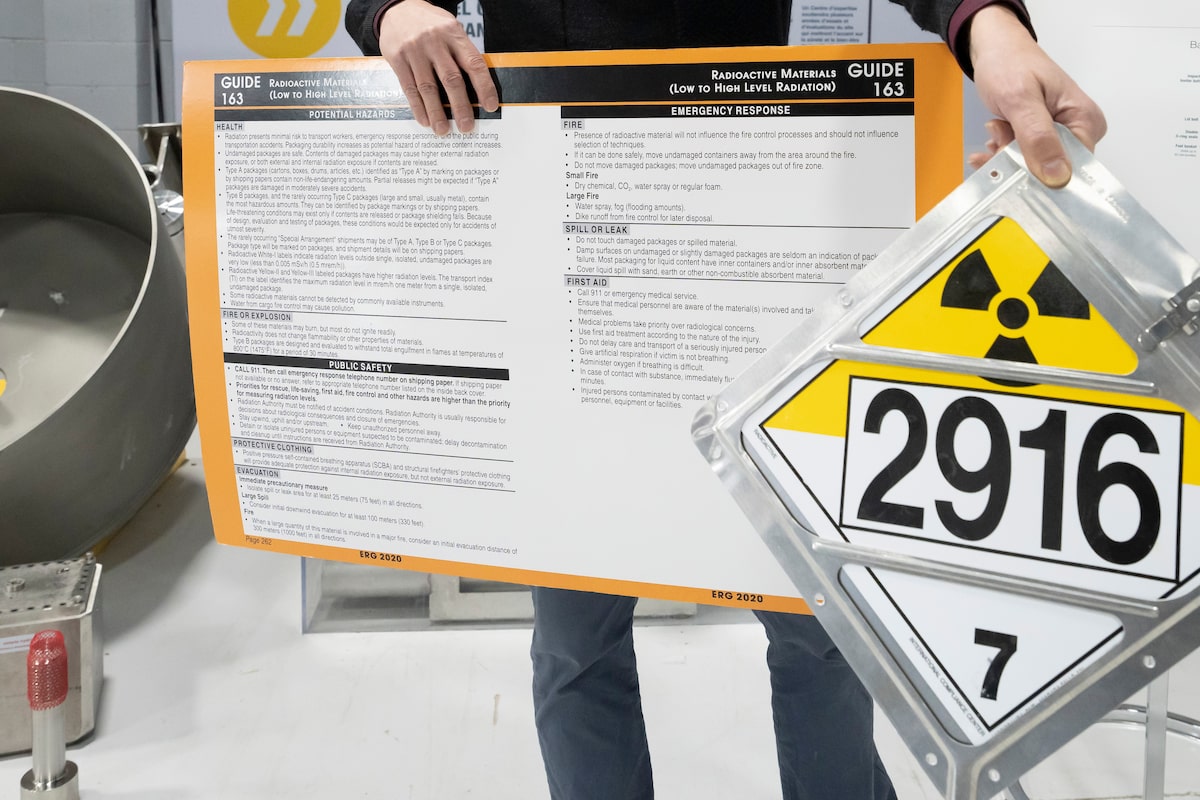A Nuclear Waste Management Organization senior transportation engineer explains transportation signage for waste uranium during a tour of NWMO’s facility in Oakville, Ont., Tuesday, Dec. 12, 2023.Frank Gunn/The Canadian Press
The Nuclear Waste Management Organization has selected a site north of Lake Superior for a proposed underground disposal facility for nuclear waste, the organization announced Thursday.
It’s a milestone for the nuclear industry’s decades-long efforts to find a permanent resting place for its radioactive waste, ending a search that formally began in 2010 and considered 22 candidate sites.
The NWMO had promised a “consent-based” process for locating the facility, which meant a demonstration of willingness from one municipality and one First Nation. The Township of Ignace, which is located 40 kilometers east of the site, confirmed in July it was willing and stands to receive $170-million over the project’s 175-year duration under an agreement it signed with the NWMO earlier this year.
Northern Ontario First Nation says yes in referendum on possible nuclear waste site
In a statement, the Township of Ignace said the NWMO’s decision “has the potential to alter the future trajectory and landscape of this small community and the entire region.”
On Nov. 18, Wabigoon Lake Ojibway Nation, while not granting a final approval to the project in the same manner Ignace had, announced it had held a referendum through which community members had agreed to “thoroughly explore the project’s feasibility.” That community has not signed a hosting agreement binding it to accept the facility.
In a statement on Thursday, the First Nation described itself as a “potential host” for the disposal facility and said it will conduct its own regulatory process before approving it. Chief Clayton Wetelainen wrote that the First Nation views its role as “one of the most important responsibilities of our time. We cannot ignore this challenge and allow it to become a burden to future generations.”
The losing candidate, the Municipality of South Bruce, had also signed a hosting agreement earlier this year under which it stood to receive $418 million. That municipality agreed to host the facility in October followed a referendum that resulted in a narrow “yes” vote. But the First Nations group the NWMO had negotiated with, the Saugeen Ojibway Nation, had not signaled consent.
Canada’s nuclear waste needs a forever home. Scientists may be close to finding one
The South Bruce municipality announced Thursday its exit from the process, and said it will receive a $4-million payment from the NWMO early next year in exchange for its participation.
The facility, which is known as a deep geological repository (DGR), is estimated to cost $26 billion. It would store radioactive spent fuel from Canada’s nuclear power reactors, which is currently located at operational and retired nuclear power plants in Ontario, Quebec and New Brunswick. The NWMO is controlled by the owners of those plants: Ontario Power Generation, Hydro Quebec and New Brunswick Power.
The DGR’s proposed location, near Ignace, is known as the Revell site. Critics of the NWMO’s plan point to communities not involved in the site selection process that will nonetheless be impacted by the DGR’s operations—including Dryden, Ont., which is approximately equidistant from the Revell Site and Ignace.
“Other communities such as Dryden (population 7000+) were not asked for their approval, nor was agreement sought from any of the communities along the 2,600-kilometre transportation corridor needed to bring used nuclear fuel from New Brunswick, Quebec, and Southern Ontario over public roads for half a century or more,” wrote Gordon Edwards, president of the Canadian Coalition for Nuclear Responsibility.
